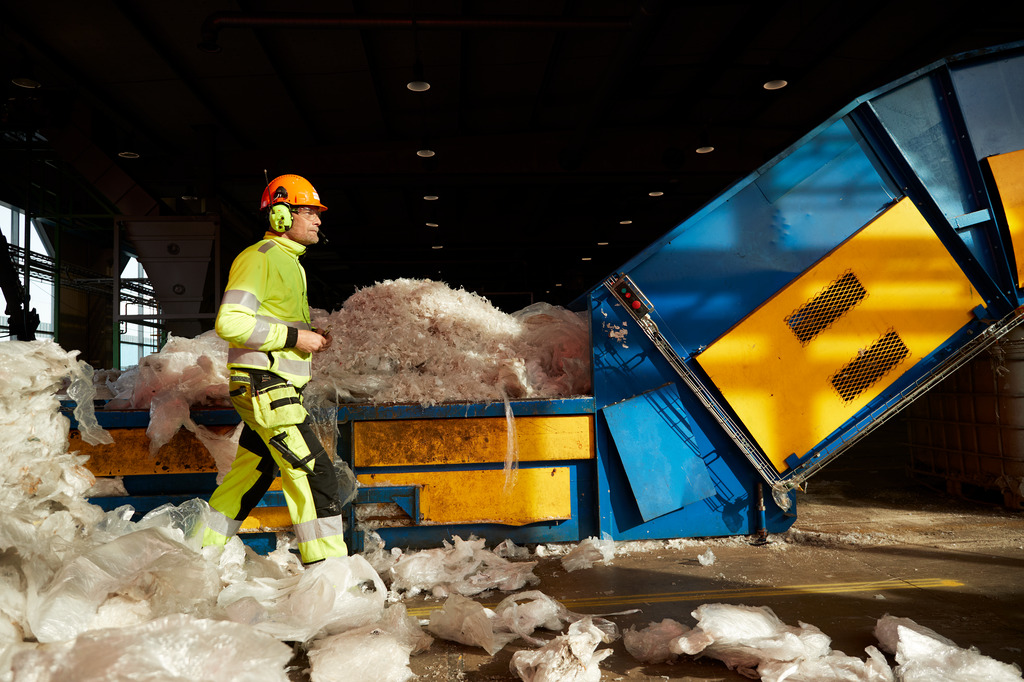- Material recycling
- Plastic
- Paper
- Electronics
- Metals
- Batteries
- Vehicle batteries
- Hazardous waste
- Alternative raw materials
- Industry solutions
- Manufacturing
- Public sector
- End-of-life vehicles
- Automotive
- Retail
- Process industry
- Infrastructure
- Recycling services
- Waste collection and recycling
- Total waste management
- Outsourcing
- Demolition
- Reuse
- Confidential services
- Insights & Inspiration
- Guides & Articles
- Videos
- Events

News & Insights
Plastic: challenges and possibilities for the industry
What are the greatest challenges for plastic recycling in the manufacturing industry?
– At present, there are just too many types of plastic used in manufacturing, both in packaging and finished products. For plastic to be recycled efficiently, it needs to be correctly sorted at source. Having a recycling container for every type of plastic would take up a great deal of space and be disruptive to production lines. Therefore, we have to make sure that fewer plastic types are used in manufacturing. It presents a major challenge for the industry.
Recycling plastic is more complicated than recycling other materials. Why is that?
– Often, it isn’t clear what type of plastic we are collecting. The term plastic is used to describe many different materials, such as LDPE, HDPE and PP. When we carry out waste sorting analyses, we find many different, unmarked plastic types in the same container. If we don’t know what it is, we can’t recycle it. In order to find effective solutions, manufacturers, plastic suppliers and recyclers need to come together and agree how to deal with the issue.

How can the manufacturing industry change?
– Manufacturers can demand more from their suppliers. Currently, many companies, quite rightly, use recyclable product packaging. However, plastic, corrugated card and steel are only recyclable when isolated, not if they are mixed. The issue is further complicated when you have thousands of suppliers using different types of plastic in their packaging. Manufacturers need to be more specific about what they want from their suppliers. For example, they could demand that all packaging be made from transparent LDPE plastic.
Is there anything you should absolutely avoid?
– To give one example, it is difficult to analyze and sort black plastic, as the measuring equipment can’t detect it. Colored plastics, in general, reduce the potential for reuse significantly, as the color can’t be removed. Overall, transparent plastic is the easiest to recycle and has the greatest resale value. We should try to use standardized plastic, that contains as few additives, color, air and chemicals as possible.
Can you give an example of good plastic recycling in action?
– One of our large industrial customers uses the same type of hard plastic in all their solid packaging - the trays and boxes used to send materials between their different companies, factories and suppliers. The trays are reused hundreds, if not thousands, of times. When they become worn and broken, they are sent for recycling and turned into new plastic. This is a good example of a functioning circular flow. Once plastics need sorting and washing, processing becomes more complicated, expensive and requires new technology.
What are the most obvious trends in plastic consumption?
– Consumers are going to become more demanding about how plastic is used in the manufacturing industry. We will see specific requirements being applied to a wider range of products, as is currently the case in the food industry. This is already happening in clothing manufacture, with greater demands for organic and recycled products. We expect Swedish manufacturers will be asking their suppliers to produce more plastic from recycled materials, just as they do today with other materials.
4 tips for the industry
- Wherever possible, use transparent plastic - avoid black plastic completely.
- Use as few different types of plastic as possible.
- Monitor the plastic types you currently work with.
- Specify to your suppliers which types of plastic you require. For example, demand one kind of plastic for all packaging material.
Christoffer Wahlborg is the industry manager for Stena Recycling’s automotive manufacturing clients. He keeps track of trends and develops services for customers in this sector.
Share article